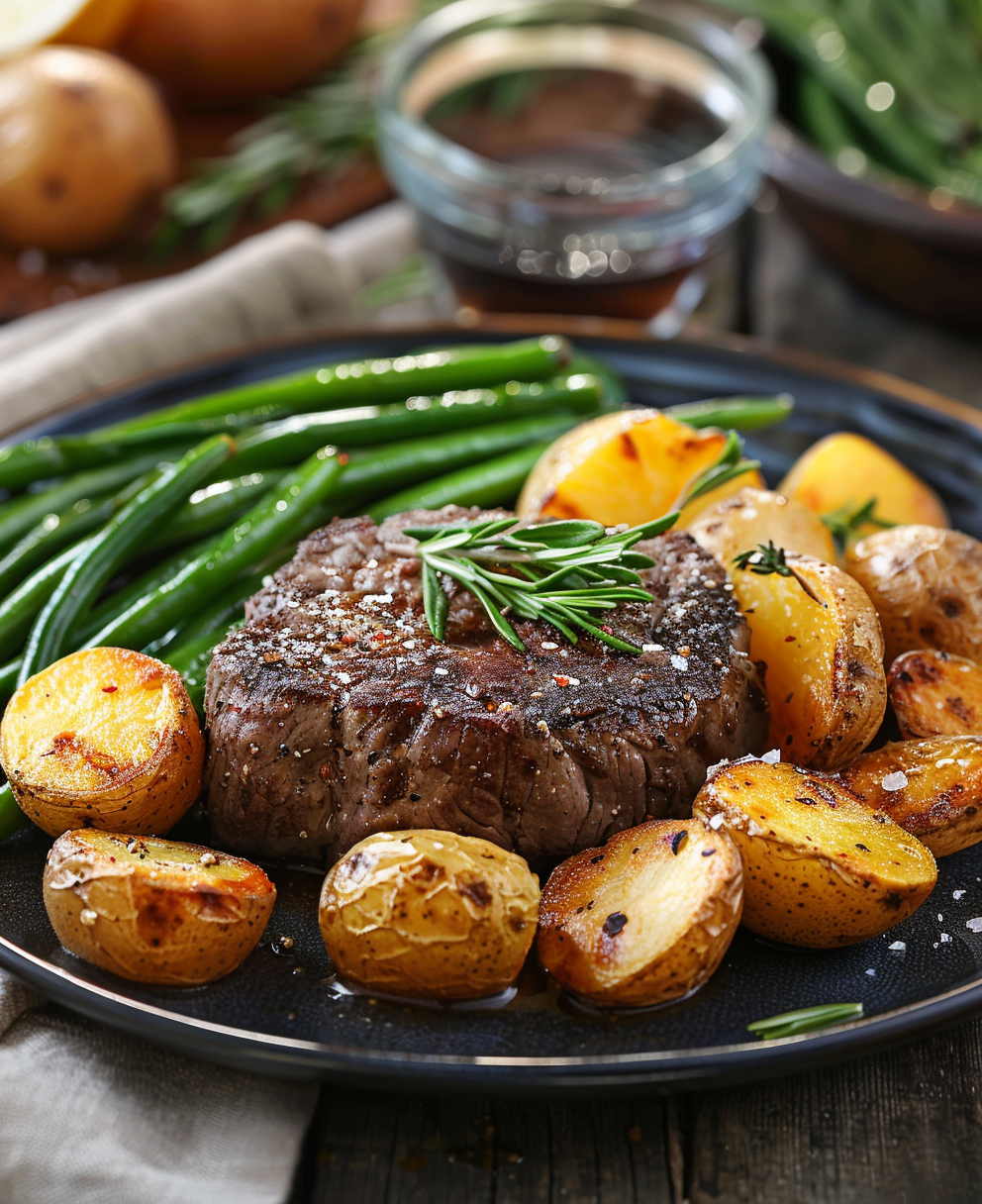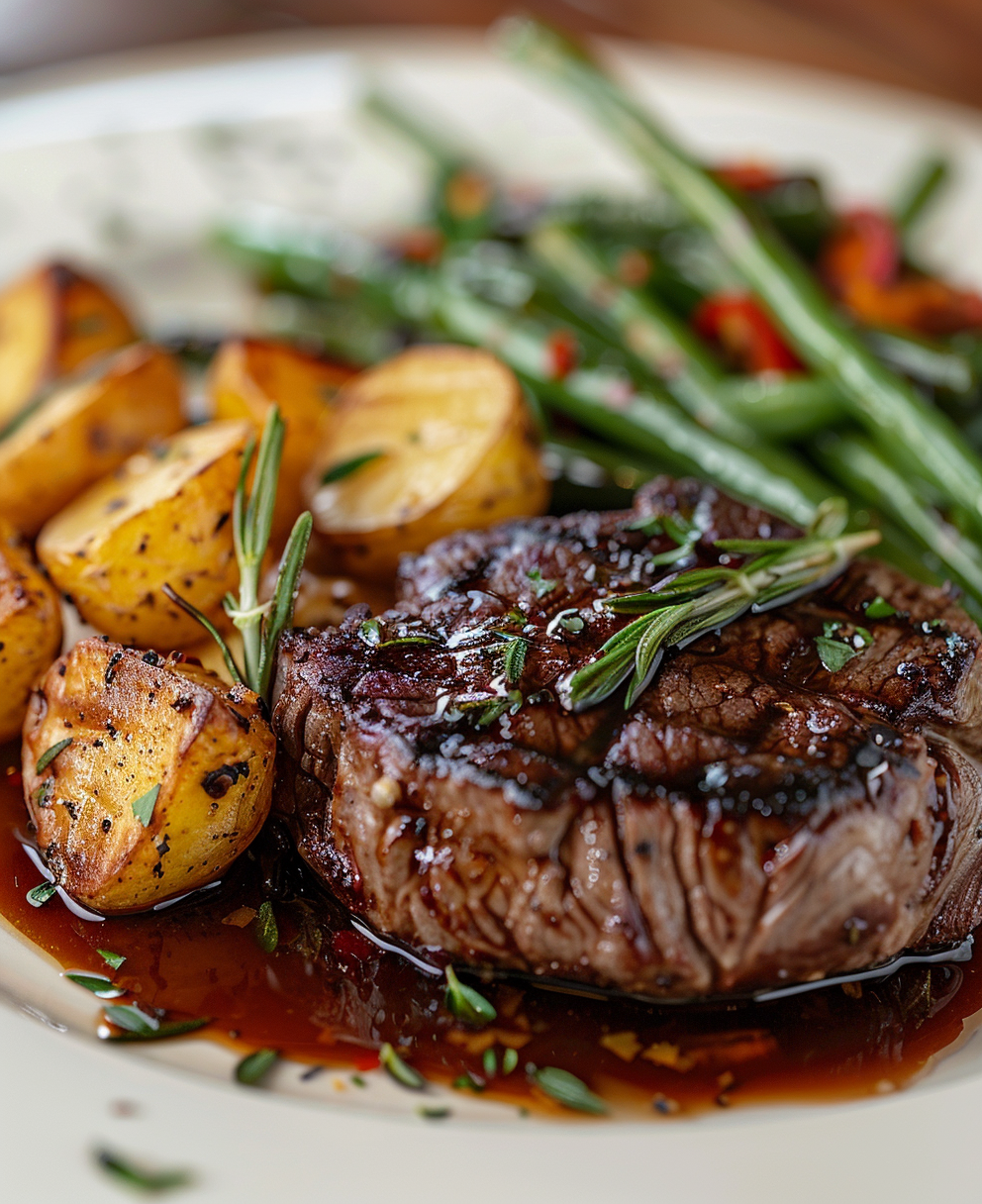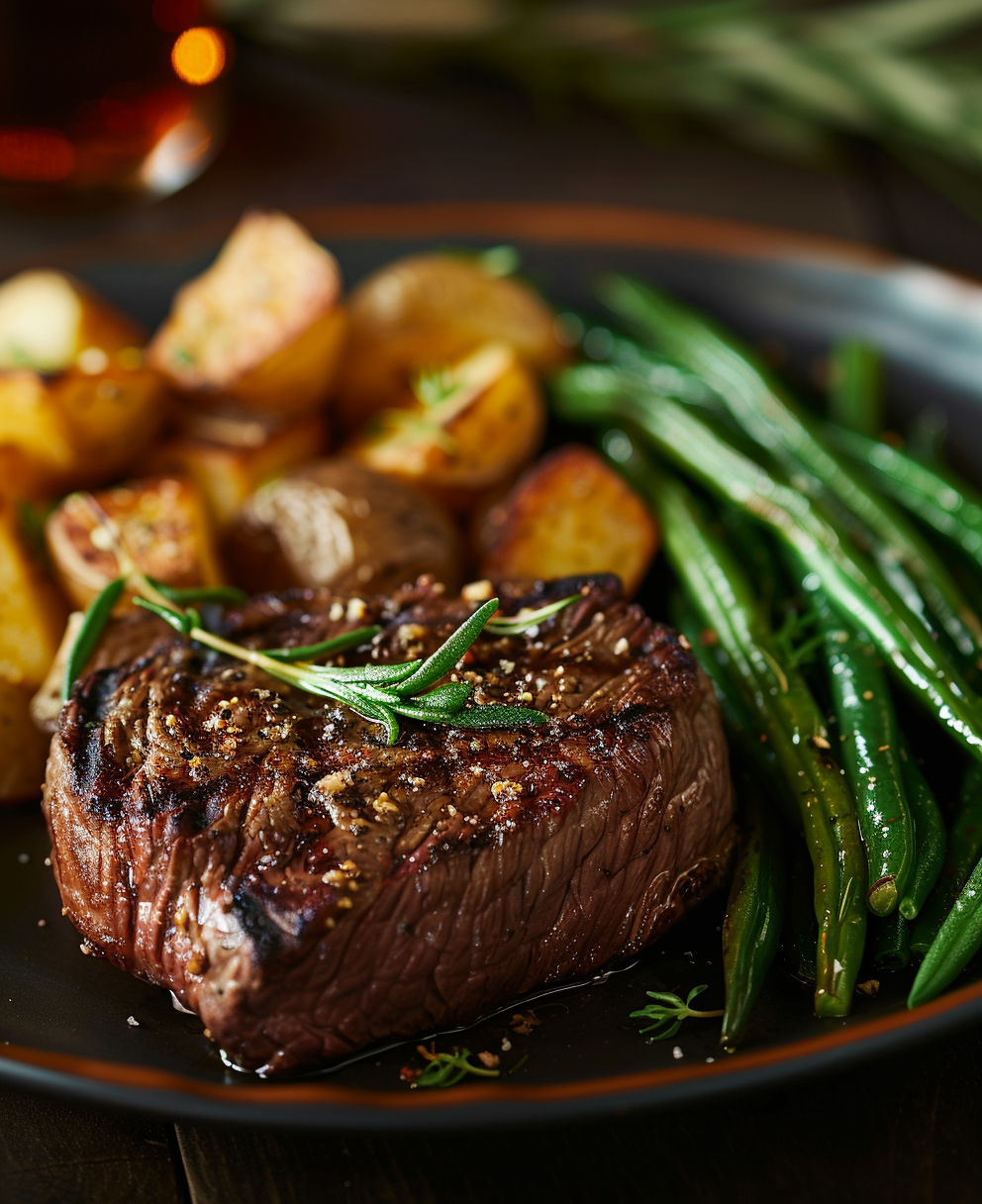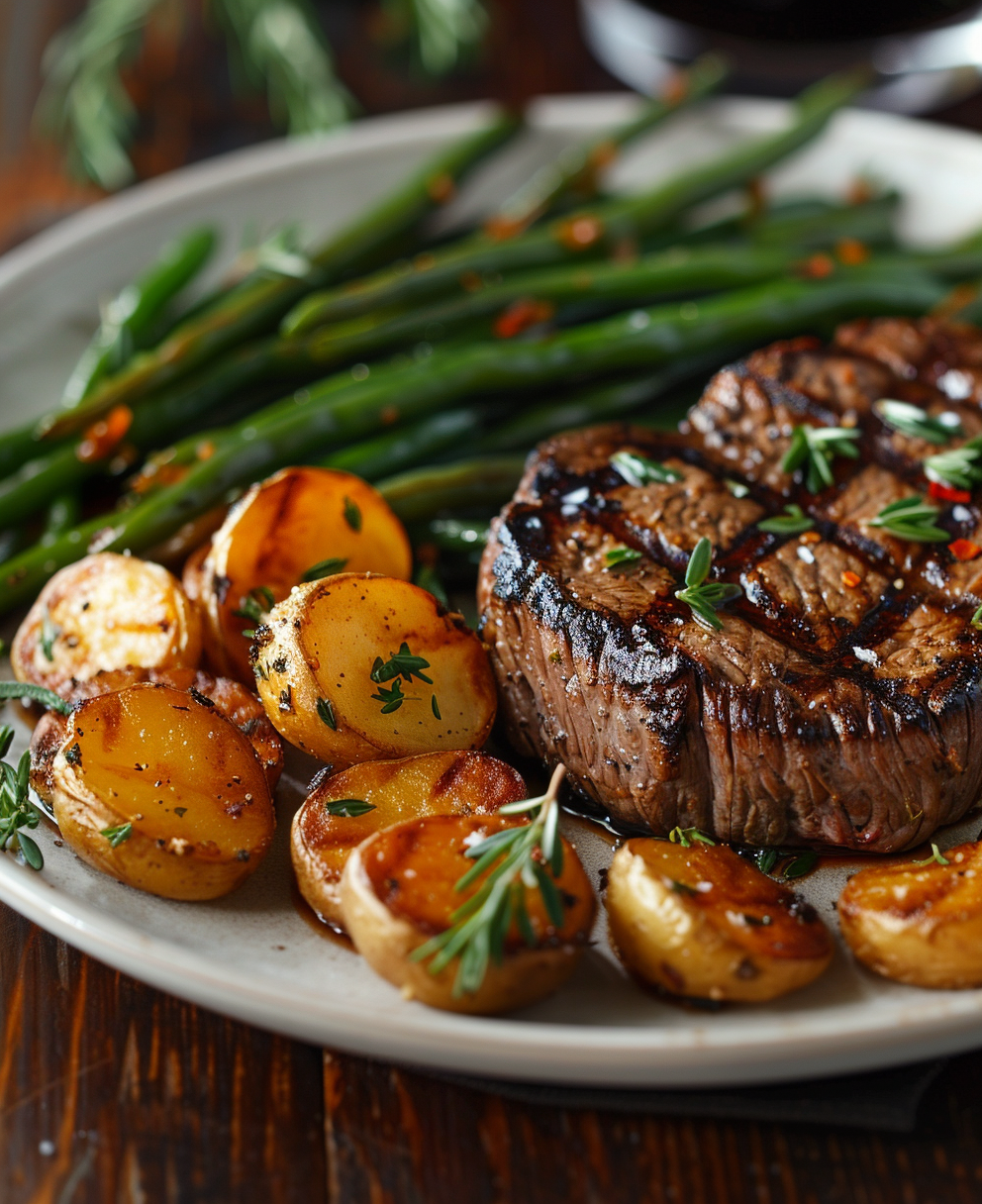
A Steak That Will Make You the Hero of the Dinner Table
There’s something magical about a perfectly cooked tenderloin steak. I remember the first time I made one for my family—it was like watching fireworks go off in their eyes. The tenderness, the flavor, the juicy goodness—how to cook tenderloin steak became my secret weapon for impressing loved ones. Whether you’re grilling it, searing it in a skillet, or baking it in the oven, this cut of beef is versatile and oh-so-delicious.
The Story Behind the Steak
Tenderloin steak, often called filet mignon when cut into smaller portions, has a rich history. It comes from the tenderloin muscle of the cow, a part that doesn’t get much exercise, making it incredibly soft. In France, they call it “filet de bœuf,” and it’s considered a delicacy. Back in the day, only the wealthy could afford it. But now? With a little know-how, anyone can whip up a tenderloin steak recipe that feels luxurious without breaking the bank.
I tested this recipe countless times, tweaking it until it was just right. My favorite version? A grilled tenderloin steak with a smoky char and a buttery finish. Trust me, once you try it, you’ll understand why it’s worth every bite.
Why You’ll Love This Recipe
This tenderloin steak recipe is all about simplicity meeting flavor. No fancy techniques, no hours of prep—just straightforward steps that deliver restaurant-quality results. Plus, tenderloin is naturally lean, making it a healthier option compared to fattier cuts. Whether you’re cooking for your family, hosting friends, or treating yourself, this dish is sure to please.
Perfect Occasions to Prepare This Recipe
Need an excuse to make this dish? How about any occasion! From romantic dinners to holiday feasts, tenderloin steak fits right in. I love serving it on birthdays, anniversaries, or even casual Sunday dinners. It’s also a great choice for impressing guests at a summer barbecue with how to cook tenderloin steak on grill tips.
Ingredients
- 4 beef tenderloin steaks (about 6–8 ounces each)
- 2 tablespoons olive oil
- 1 teaspoon salt
- 1 teaspoon freshly ground black pepper
- 2 tablespoons unsalted butter
- 2 garlic cloves, smashed
- 2 sprigs fresh rosemary

Substitution Options
- Swap olive oil for avocado oil if you prefer a higher smoke point.
- Use thyme instead of rosemary for a slightly different flavor profile.
- If you don’t have fresh garlic, minced garlic works too, but fresh is always better!
Preparation Section
Step 1: Pat the Steaks Dry
Start by patting your tenderloin steaks dry with paper towels. This might seem like a small step, but it’s crucial for getting a good sear. Wet steaks steam instead of caramelizing, and we want that golden crust. As you handle the meat, notice its smooth texture and deep red color—it’s almost hypnotic.
Pro tip: Take the steaks out of the fridge 30 minutes before cooking. Room temperature meat cooks more evenly.
Step 2: Season Generously
Sprinkle both sides of the steaks with salt and pepper. Don’t be shy here; seasoning is key to bringing out the natural flavors of the beef. Rub the spices gently into the surface so they stick. The coarse grind of the pepper adds a lovely aroma that pairs beautifully with the richness of the meat.
Step 3: Heat Your Pan or Grill
If you’re using a cast iron skillet, heat it over medium-high until it’s screaming hot. For grilling fans, preheat your grill to high heat. A hot surface ensures a perfect sear, locking in those juices. You’ll know it’s ready when you see faint wisps of smoke rising.
Chef’s tip: Add a drop of water to the pan—if it sizzles and evaporates instantly, you’re good to go.
Step 4: Sear the Steaks
Place the steaks in the pan or on the grill and let them cook undisturbed for 3–4 minutes per side. Resist the urge to move them around; patience pays off in the form of a gorgeous crust. Listen to the sizzle—it’s music to a cook’s ears. For extra flavor, add butter, garlic, and rosemary during the last two minutes, basting the steaks generously.
Step 5: Rest Before Serving
Once cooked to your desired doneness, transfer the steaks to a plate and let them rest for 5 minutes. This allows the juices to redistribute, ensuring every bite is as juicy as possible. While they rest, take a moment to admire your handiwork. Look at that beautiful char and imagine the flavors waiting inside.
Timing
- Prep Time: 10 minutes
- Cooking Time: 8–10 minutes (depending on thickness)
- Resting Time: 5 minutes
- Total Time: About 25 minutes
Chef’s Secret
To check doneness without a thermometer, use the finger test. Press the center of the steak with your fingertip. If it feels soft and squishy, it’s rare. Springy but still yielding? Medium-rare. Firm and solid? Well-done. Aim for medium-rare for maximum juiciness.
Extra Info
Did you know that beef tenderloin is often referred to as the “king of steaks”? Its melt-in-your-mouth texture makes it a favorite among steak lovers worldwide. Fun fact: cows have two tenderloins, which means there’s always enough to share!
Necessary Equipment
- Cast iron skillet or grill
- Tongs
- Paper towels
- Meat thermometer (optional but helpful)
Storage
If you happen to have leftovers (unlikely, but possible), store them properly to maintain freshness. Place the cooled steaks in an airtight container and refrigerate for up to 3 days. Reheat gently in a skillet to avoid drying out the meat.
For longer storage, freeze the steacks wrapped tightly in plastic wrap and aluminum foil. They’ll stay good for up to 3 months. Thaw overnight in the fridge before reheating.
Avoid microwaving leftover tenderloin, as it can turn rubbery. Instead, slice thinly and serve cold over salads for a delicious next-day meal.
Tips and Advice
- Use a meat thermometer to ensure precision. Medium-rare is 130°F, medium is 140°F.
- Don’t overcrowd the pan or grill; give each steak space to develop a proper crust.
- Basting with butter not only enhances flavor but also keeps the steaks moist.

Presentation Tips
- Serve the steaks on warm plates to keep them hot longer.
- Garnish with additional fresh herbs for a pop of color.
- Pair with roasted vegetables or mashed potatoes for a complete meal.
Healthier Alternative Recipes
Want to lighten things up? Here are six variations:
- Grilled Tenderloin Medallions: Cut the tenderloin into thinner medallions and grill quickly for less fat.
- Oven-Baked Filet Mignon: Roast in the oven at 400°F for 10–12 minutes for a hands-off approach.
- Herb-Crusted Tenderloin: Coat the steaks with a mixture of breadcrumbs, Parmesan, and herbs before baking.
- Stuffed Tenderloin: Slice the steaks open and fill with spinach and feta before grilling.
- Asian-Inspired Marinade: Marinate the steaks in soy sauce, ginger, and garlic for a bold twist.
- Keto-Friendly Steak Salad: Top mixed greens with sliced tenderloin and a tangy vinaigrette.
Common Mistakes to Avoid
Mistake 1: Overcooking the Steak
Overcooked tenderloin turns tough and dry, ruining the whole experience. To avoid this, use a timer and monitor the internal temperature closely. Remember, the steak will continue to cook slightly while resting.
Tip: Pull the steaks off the heat a few degrees below your target temperature to account for carryover cooking.
Mistake 2: Skipping the Resting Step
Rushing to slice into the steak immediately after cooking causes all the juices to spill out, leaving you with a dry piece of meat. Always let it rest for at least 5 minutes.
Mistake 3: Using a Cold Pan
A cold pan won’t give you that desirable crust. Make sure your skillet or grill is piping hot before adding the steaks.
Mistake 4: Overcrowding the Cooking Surface
When steaks are too close together, they release moisture and steam instead of searing. Cook in batches if needed.
Mistake 5: Neglecting Seasoning
Underseasoned steak tastes bland. Be generous with salt and pepper to bring out the beef’s natural flavors.
FAQ
What is the best cooking method for tenderloin steak?
The best method depends on your preference. Grilling gives a smoky flavor, while a cast iron skillet provides a perfect crust. Both methods work wonders when done right.
How long do you cook a tenderloin steak in a pan?
About 3–4 minutes per side for medium-rare, depending on thickness. Use a thermometer to confirm doneness.
What is the best cook for tenderloin?
Medium-rare is ideal for tenderloin because it retains moisture and tenderness. Aim for an internal temperature of 130°F.
Should beef tenderloin be cooked fast or slow?
Fast cooking is best for individual steaks, while slow roasting works well for whole tenderloins.
How do you prevent the steak from sticking to the grill?
Ensure the grill is clean and oiled before placing the steaks on it. Also, avoid moving the steaks too soon.
Can I cook tenderloin steak in the oven?
Yes! Preheat the oven to 400°F, sear the steaks first, then finish them in the oven for 5–7 minutes.
What sides pair well with tenderloin steak?
Classic options include mashed potatoes, roasted asparagus, or a crisp salad. They complement the rich flavors beautifully.
Is tenderloin the same as filet mignon?
Filet mignon is a smaller cut from the tenderloin. Both are incredibly tender and flavorful.
How do I know when the steak is done?
Use a meat thermometer or the finger test. For medium-rare, aim for 130°F internally.
Can I marinate tenderloin steak?
Absolutely! A simple marinade of olive oil, garlic, and herbs adds depth to the flavor without overpowering the meat.
Final Thoughts
Learning how to cook tenderloin steak opens up a world of culinary possibilities. Whether you’re grilling, pan-searing, or baking, this recipe promises restaurant-quality results every time. So grab your ingredients, fire up the grill, and treat yourself to a meal fit for royalty. Happy cooking!


How to Cook Tenderloin Steak
Ingredients
Equipment
Method
- Pat the tenderloin steaks dry with paper towels.
- Take the steaks out of the fridge 30 minutes before cooking to bring to room temperature.
- Sprinkle both sides of the steaks with salt and pepper.
- Heat a cast iron skillet or grill over medium-high heat until hot.
- Place the steaks in the pan or on the grill and cook undisturbed for 3–4 minutes per side.
- Add butter, garlic, and rosemary for basting during the last two minutes of cooking.
- Once cooked to your desired doneness, transfer the steaks to a plate and let them rest for 5 minutes.
